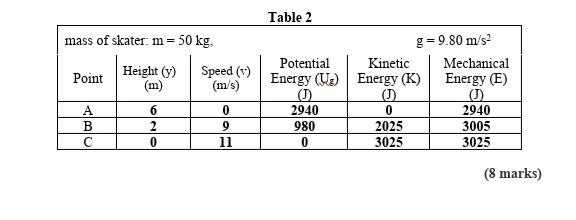Imagine effortlessly propelling a basketball into the air. As it soars, you may wonder: Does it maintain its mechanical energy throughout its flight, or does that unseen foe, air drag, gnaw away at its momentum? Today, we traverse the intriguing intersection between mechanical energy and the forces that influence it—primarily, air drag.
First, let’s delve into the essence of mechanical energy. Mechanical energy is the sum of potential energy, which is stored energy based on position or configuration, and kinetic energy, the energy of motion. In an idealized system devoid of external forces, however, mechanical energy can be seen as conserved. This principle is crucial in various physical phenomena, enhancing our understanding of movement in sports, engineering designs, and natural systems.
To illustrate, think of a simple pendulum. As it swings from its highest point to the lowest, its potential energy morphs into kinetic energy and vice versa, dancing harmoniously. In the absence of air resistance and friction, we would witness a perpetual motion, a perpetual energy cycle. Yet, the world is not so straightforward. Enter the realm of air drag, a force that acts contrary to motion.
Air drag, or aerodynamic drag, arises when an object moves through the air, causing friction between the object and the air molecules it displaces. This resistance results not only in a decrease in velocity but in the dissipation of mechanical energy as well. It is a phenomenon that surfaces in all forms of movement, from the pitter-patter of raindrops to the swift sprint of an athlete on the track.
Now, let’s consider the forces at play during an object’s ascent and descent. When a basketball is launched, it initially battles against not only gravity but also the opposing force of air drag. As it climbs, the kinetic energy diminishes while potential energy increases. But, crucially, this process isn’t without cost. Air drag siphons away energy, converting some of the mechanical energy into thermal energy—essentially heating the air around the basketball as it moves. In this instance, we see that the conservation of mechanical energy is, in fact, challenged.
The question emerges: Is mechanical energy truly conserved in the presence of air drag? The straightforward answer is no. The introduction of air drag evokes a transformation, leading to a loss in the mechanical energy of the system. This loss manifests as increased heat, serving as an embodiment of the law of conservation of energy, which states that energy can neither be created nor destroyed but merely changes forms.
To further articulate the role of air drag, let’s discuss its dependency on various factors. The shape and size of the object significantly impact the drag force. A streamlined object, such as a well-formed airplane wing, experiences less air resistance compared to a blunt object, like a basketball. Additionally, the relative speed of the object to the surrounding air also plays a crucial role. Faster-moving objects encounter greater air resistance, which exacerbates the loss of mechanical energy.
Now, what if we wish to engage in a thought experiment? Imagine a scenario where you design an experiment to measure the effectiveness of air drag on a falling object. You drop two different spheres—one smooth and aerodynamic, and the other rough and bulky. Observing the time taken for each to reach the ground gives insight not only into gravity but also into the influence of air drag on mechanical energy conservation.
In analyzing the outcomes of the spheres’ descent, you may discern that the aerodynamic sphere encounters less air resistance, thereby retaining a higher percentage of its mechanical energy throughout its fall. Conversely, the bulky sphere, succumbing to greater drag forces, experiences a more significant loss of mechanical energy, further elucidating the intricate dance between forces acting upon moving objects.
In practical applications, engineers design vehicles, buildings, and sports equipment with air drag in mind, striving to minimize energy loss. From crafting streamlined cars that slice through air with minimal resistance to designing athletes’ gear that reduces drag, the pursuit of maximizing efficiency becomes paramount. Furthermore, the study of air drag goes beyond mere practicalities; it extends into the realms of environmental conservation. Vehicles designed to optimize drag efficiency consume less fuel, which in turn reduces emissions—contributing to a healthier planet.
However, acknowledging the challenges is equally important. Even in well-optimized designs, air drag remains a persistent adversary that siphons energy. The quest for absolute efficiency often grapples with the realities of physics—nothing can be idealized to perfection. This continuous interplay showcases not only the beauty of science but also the resilience of human ingenuity.
In conclusion, as we ponder the question of whether mechanical energy is conserved in the presence of air drag, a resounding clarification arises: it isn’t. Air drag converts a portion of mechanical energy into heat and impedes the idealized conserved state we often contemplate in physics. The implications of this realization extend far into practical realms, influencing designs and energy conservation strategies across industries. So, as we launch that basketball toward the sky, let’s recognize and respect the forces at play, embracing the dance of energy transformation while striving for more efficient solutions to our environmental challenges.








